Is it the scrappy challenger, the 2025 Nissan Frontier, or the reigning champion, the 2025 Toyota Tacoma? Let’s take a walk around these trucks and examine what they bring to the table.
The Tacoma was recently redesigned for 2024, offering a tough and modern look with a new interior. On the other hand, the Nissan Frontier was redesigned in 2022 but has received a significant refresh for 2025 with brand-new features. The Frontier is now much larger than before, which will be evident when we examine the interior.
Engine and Performance Comparison
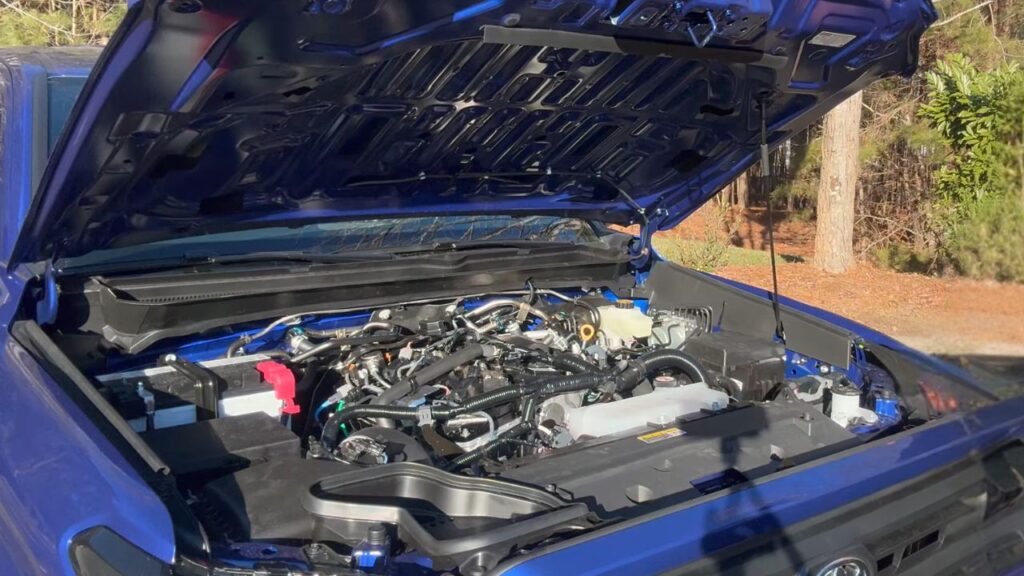
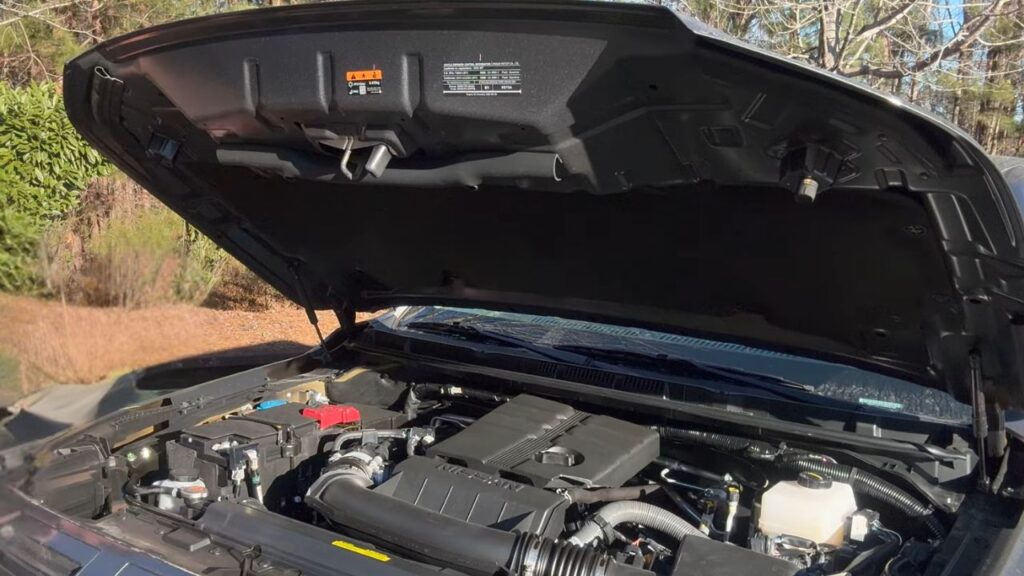
Under the hood, these trucks have two completely different philosophies. Would you prefer a naturally aspirated V6 or a turbocharged four-cylinder? The Nissan Frontier is powered by a 3.8L V6 engine paired with a 9-speed automatic transmission, producing 310 horsepower and 281 lb-ft of torque. It also includes soundproofing material under the hood and convenient hood struts.
The Tacoma, in contrast, has a 2.4L turbocharged four-cylinder engine with an 8-speed automatic transmission, delivering 278 horsepower and 317 lb-ft of torque.
While it has a prop rod instead of struts, it does feature dual height adjustments. However, it lacks soundproofing material under the hood.
Fuel economy is another area of comparison. The Frontier has a 21-gallon fuel tank, achieving 19 mpg in the city, 24 mpg on the highway, and 21 mpg combined. Meanwhile, the Tacoma has an 18.2-gallon fuel tank with an estimated fuel economy of 21 mpg city, 26 mpg highway, and 23 mpg combined.
Towing and Suspension
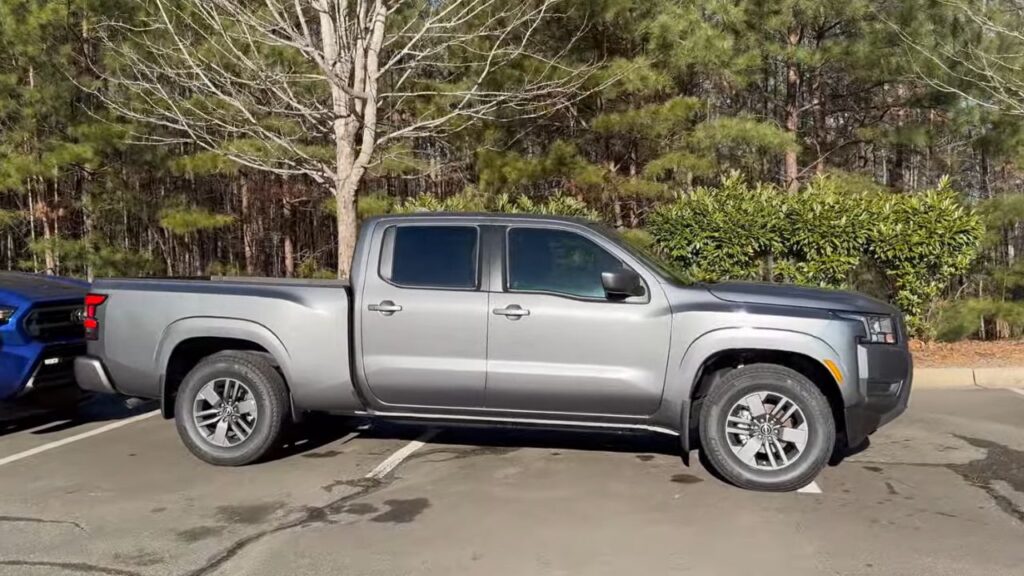
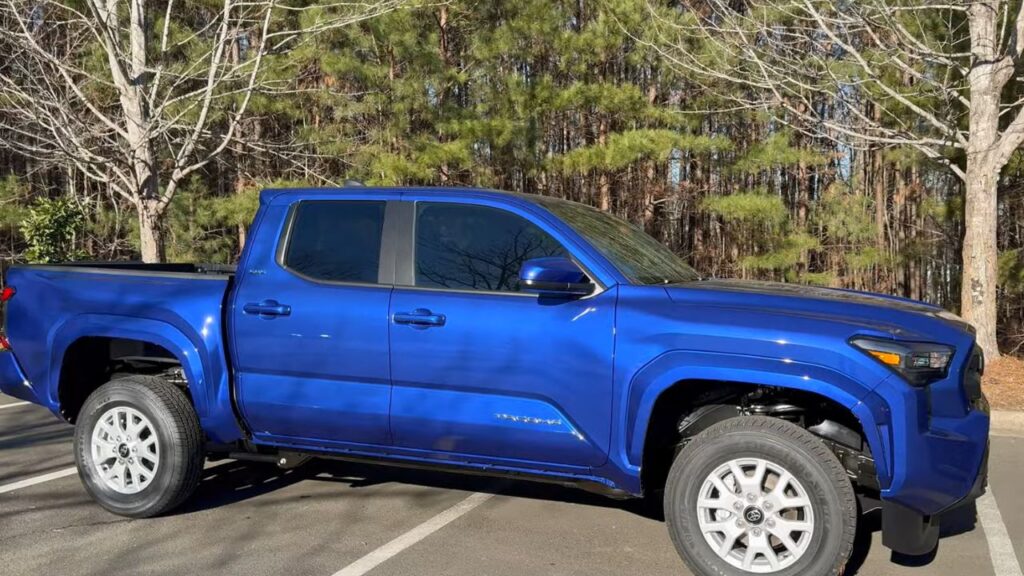
When it comes to towing, the Tacoma has a maximum capacity of 6,500 lbs for the SR5 trim. The Frontier, however, has a higher maximum towing capacity of 7,150 lbs, with the SV trim capable of towing up to 7,000 lbs.
Both trucks come with four-wheel disc brakes and an independent double wishbone front suspension. However, their rear suspensions differ: the Frontier uses a multi-leaf suspension, while the Tacoma features a multi-link suspension with coil springs.
Front-End Design and Lighting
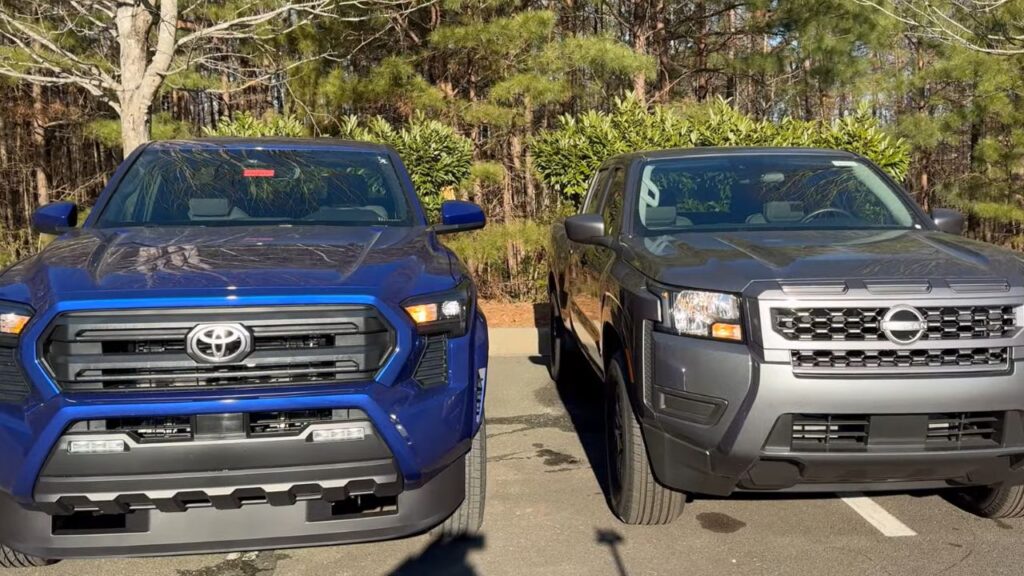
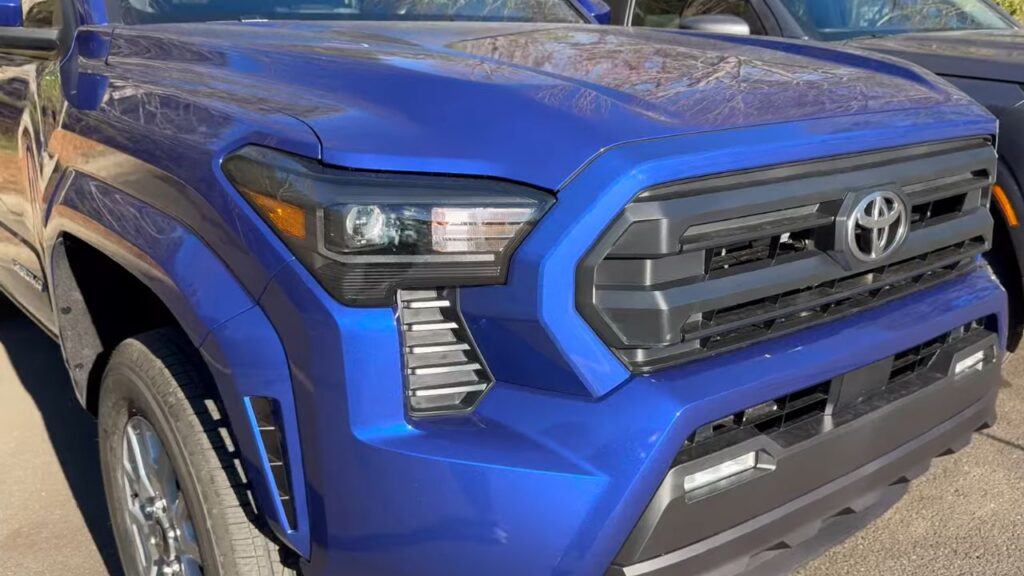
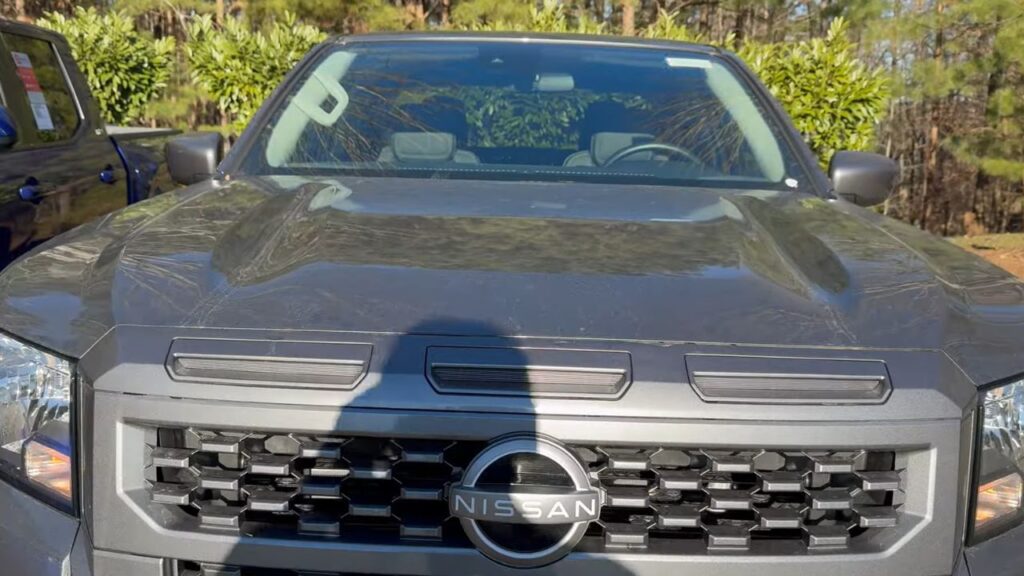
The front-end designs of these trucks reflect different philosophies. The Tacoma has a bold, modern look with an air dam designed for efficiency. It features LED headlights as standard across all trims, which is a major advantage over the Frontier.
The Frontier, on the other hand, comes with standard halogen lights on lower trims, requiring an upgrade for LED headlights. The Tacoma also incorporates radar and camera technology for enhanced safety.
Side Profile and Aesthetics
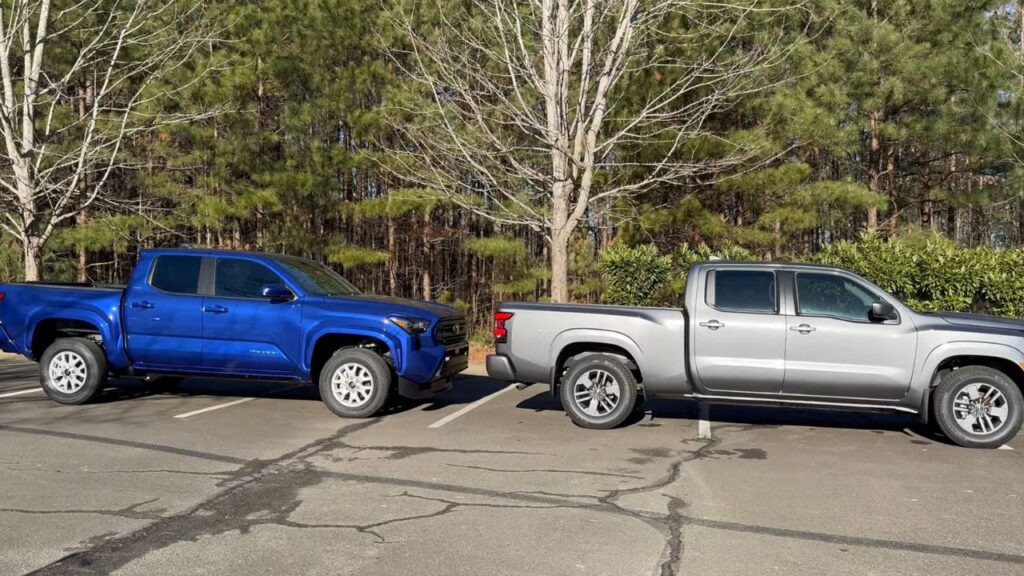
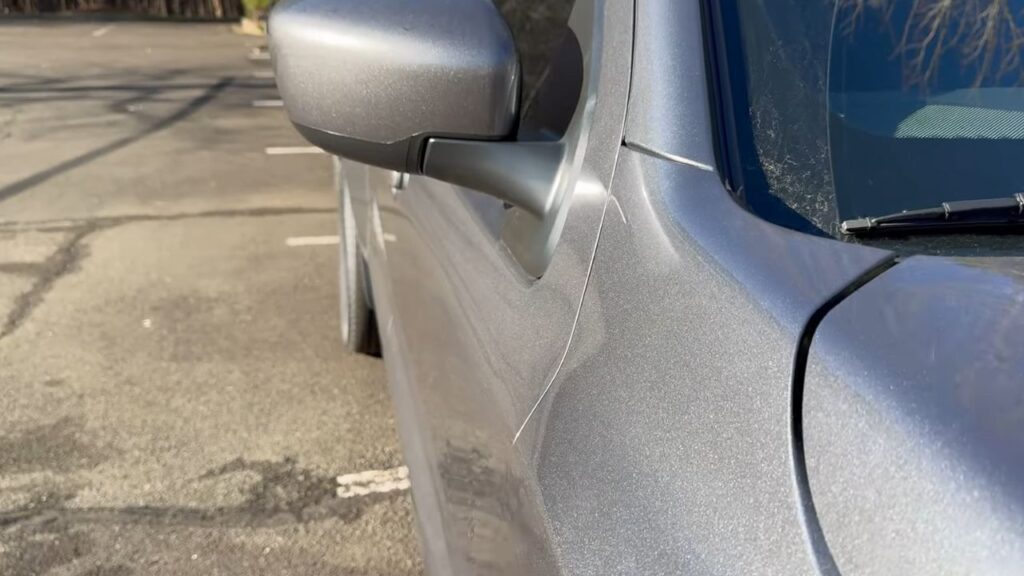
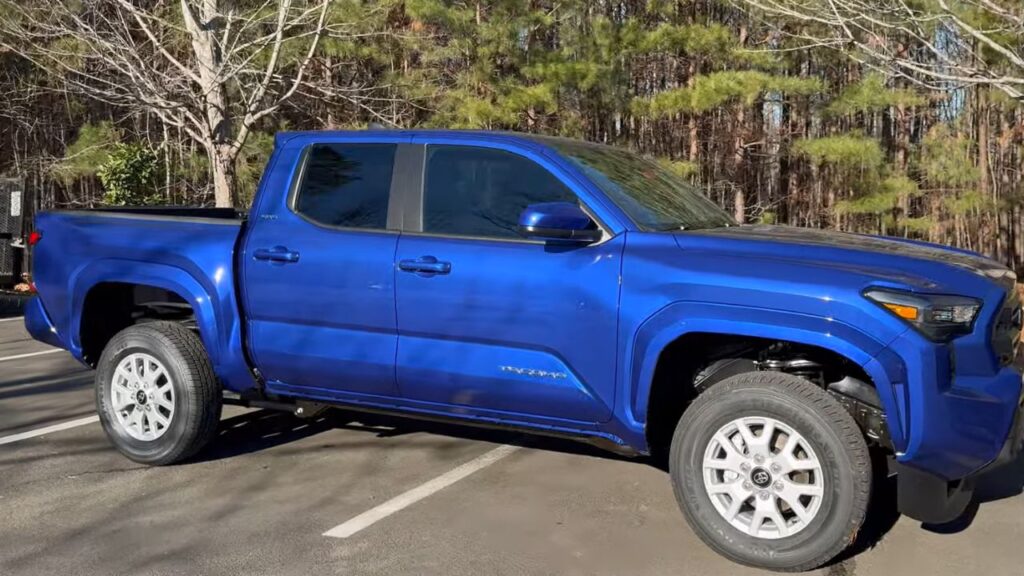
Looking at the side profiles, the Frontier has a classic truck design with body-colored fenders and a subtle yet strong stance. The Tacoma has a more rugged look with defined lines and slightly wider fenders.
The Frontier’s 17-inch wheels have a metallic finish, while the Tacoma’s wheels are finished in metallic silver. Both trucks feature a six-lug pattern and turn signal indicators, though the Tacoma includes auto-lock and unlock functions on the front doors.
Rear-End Features and Bed Options
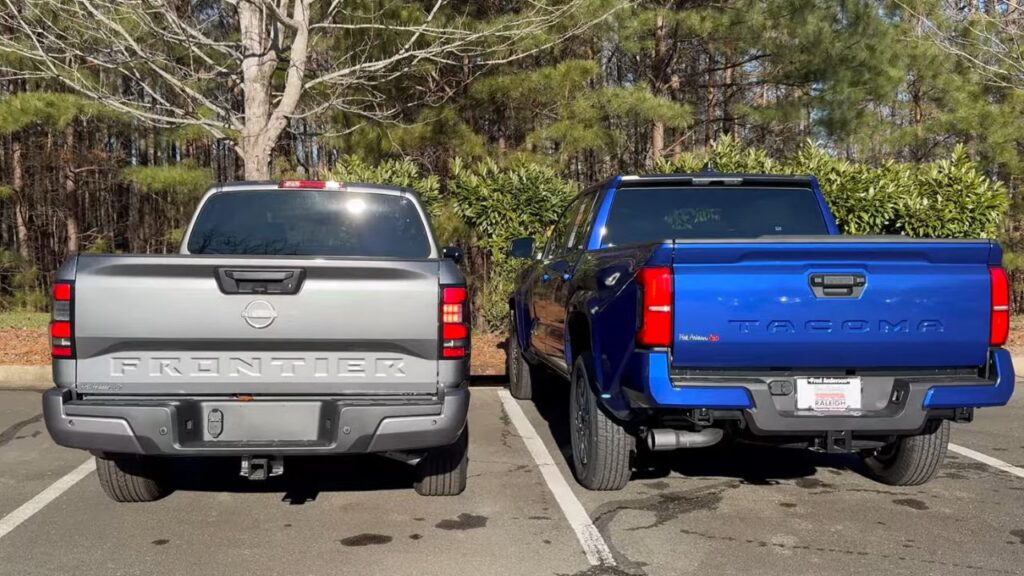
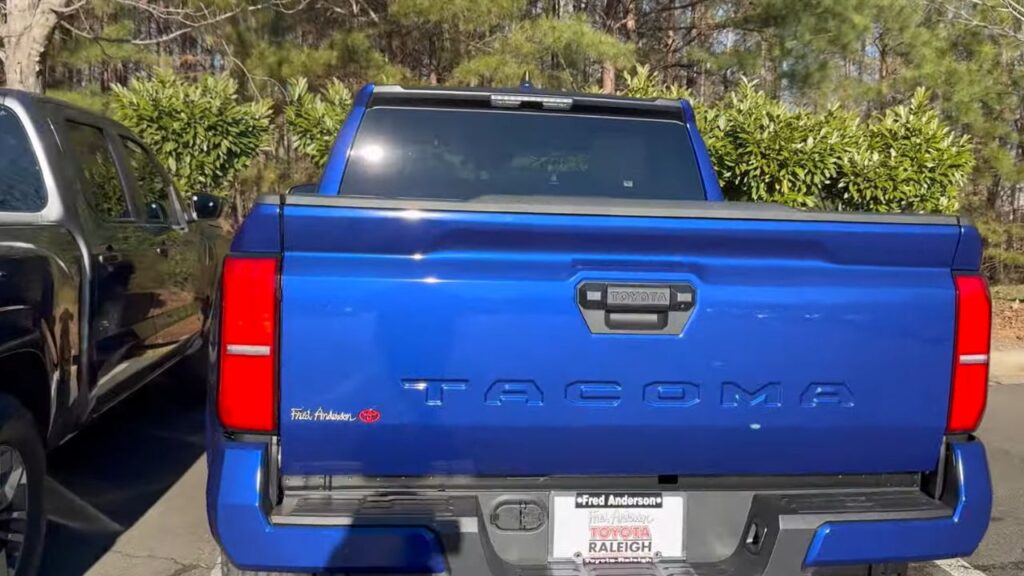
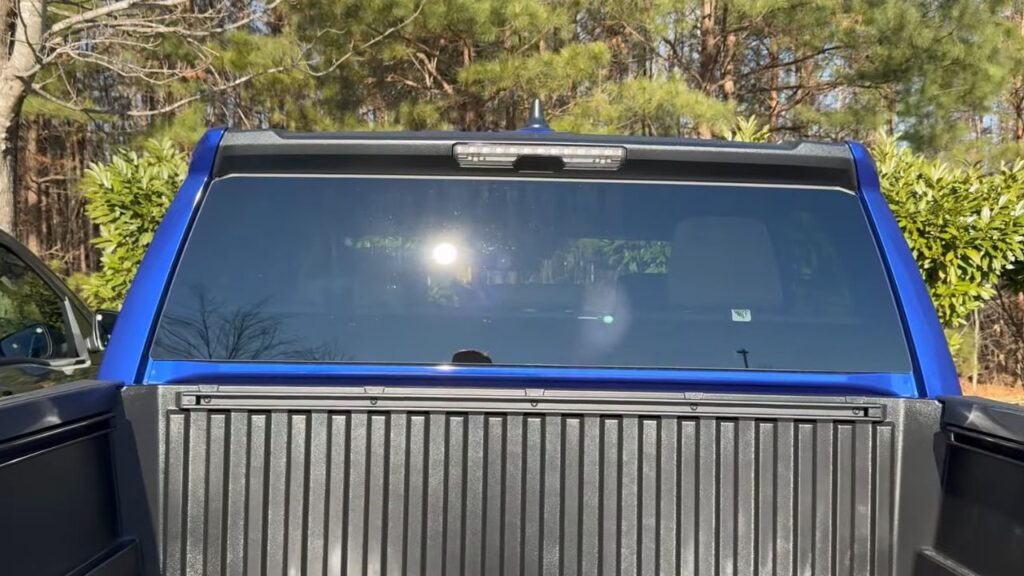
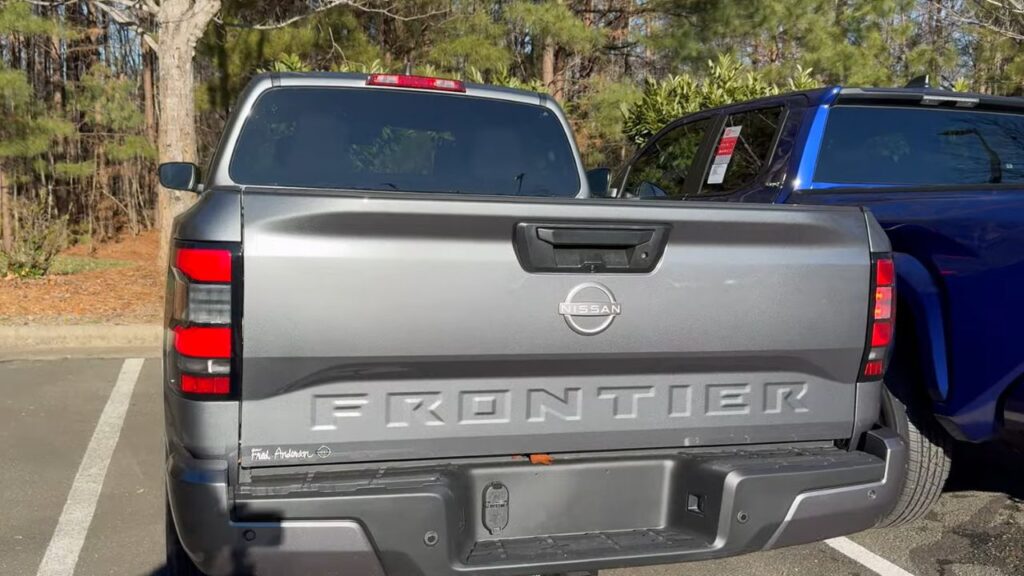
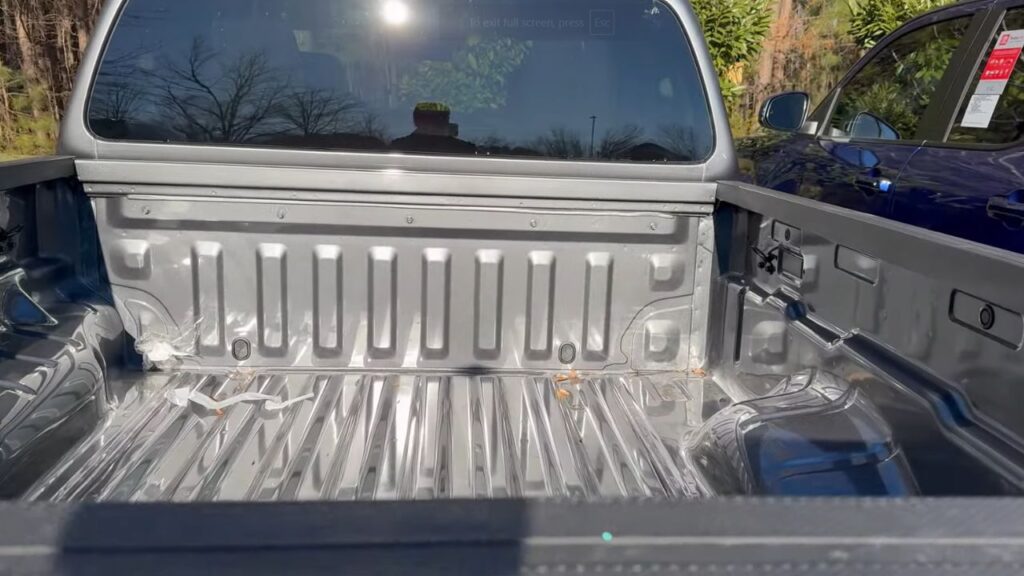
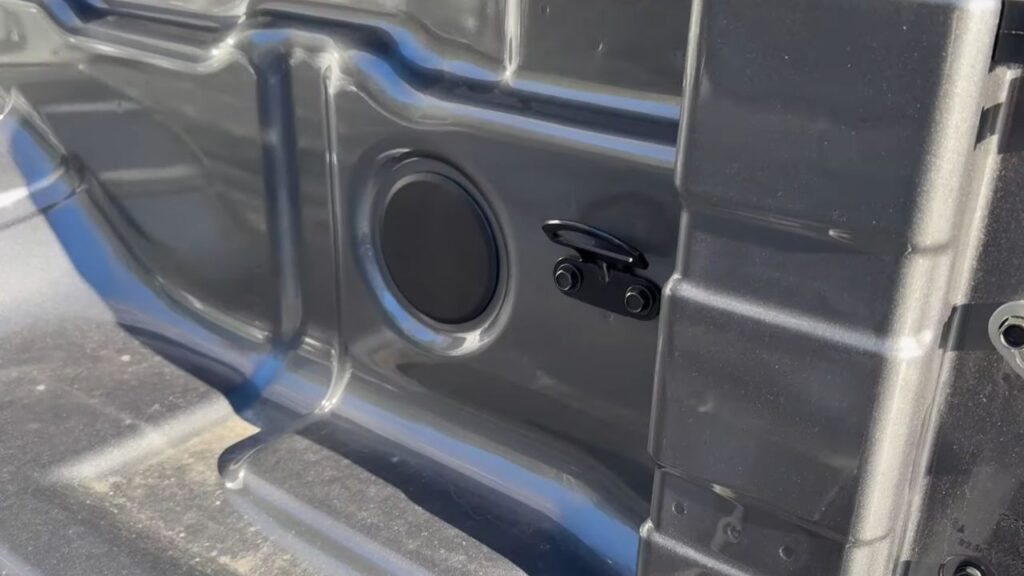
Examining the rear, the Tacoma has a composite bed with a deck rail system, LED bed lights, and tie-downs. However, it lacks a slow-lowering tailgate unless you opt for a higher trim.
In contrast, the Frontier features a slow-lowering tailgate as standard, offering a significant advantage. However, its bed is not composite, making it more prone to scratches and dents.
Both trucks have backup cameras, stamped branding, and body-colored bumpers. The Tacoma features large exhaust pipes and a towing hitch, while the Frontier’s rear sensors and hitch are well-integrated into the design.
Rear Seat Legroom and Comfort
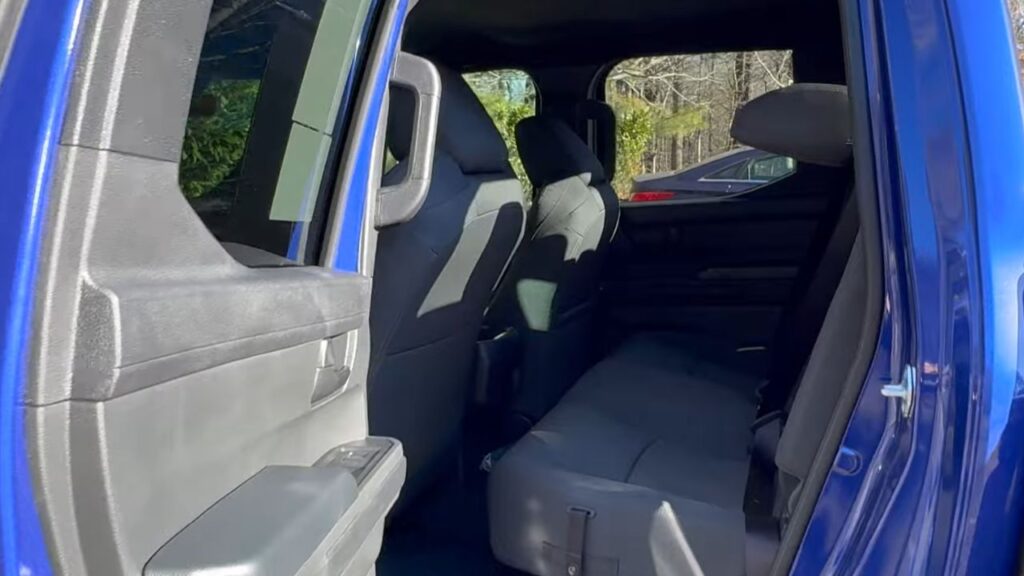
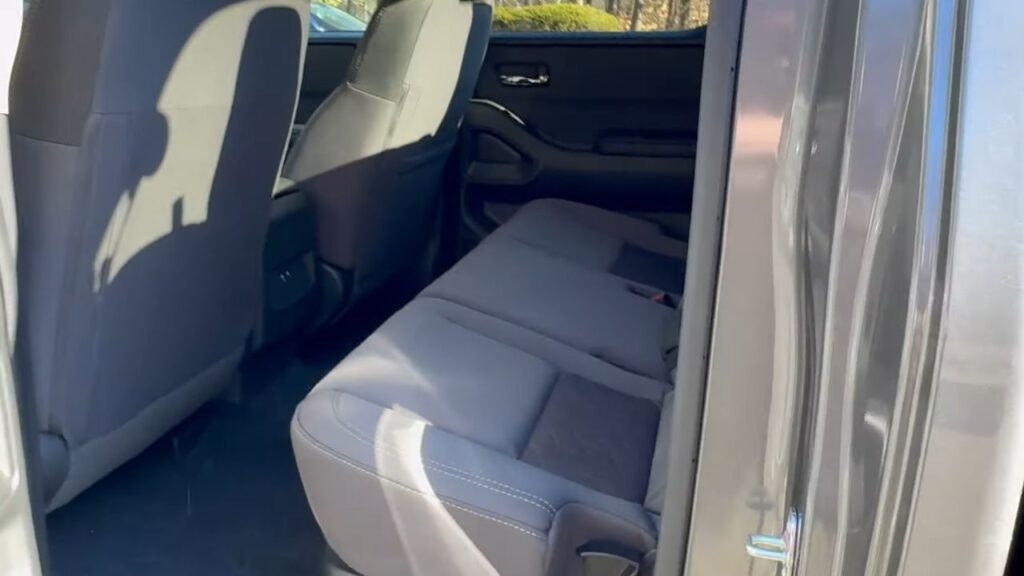
Rear seat space is a critical factor for many buyers. The Tacoma has 33.7 inches of rear seat legroom and 38.4 inches of headroom. The Frontier has slightly more headroom at 38.6 inches but slightly less listed legroom at 33.2 inches. However, real-world measurements suggest that the Frontier’s back seat may offer more usable space.
The Frontier provides under-seat storage, making it convenient for truck owners needing extra space. The Tacoma lacks a fold-down center armrest in the SR5 trim, though it does include cup holders in the center console. Both trucks have rear seat pockets, but only on the passenger side.
Front Seat Comfort and Technology
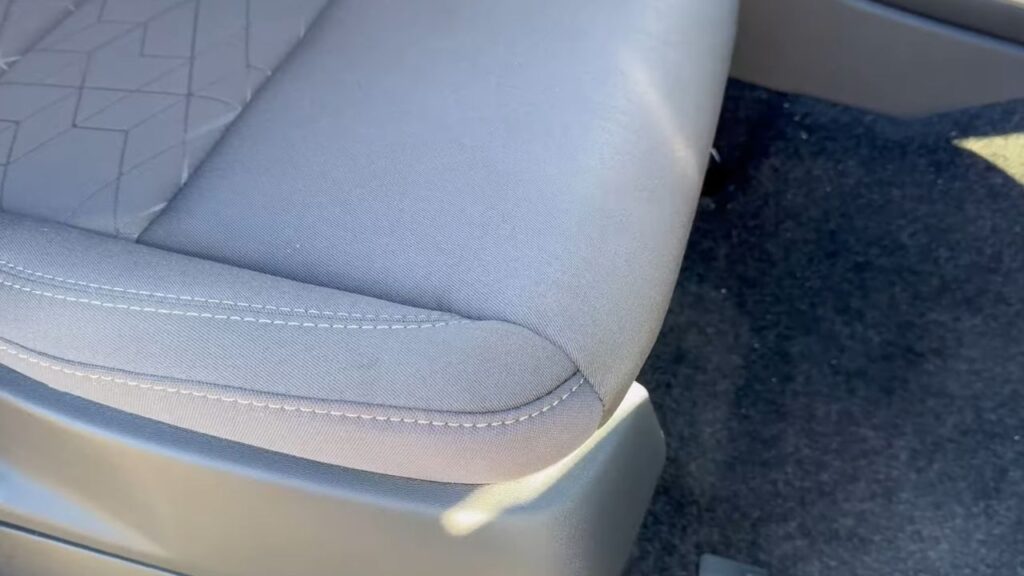
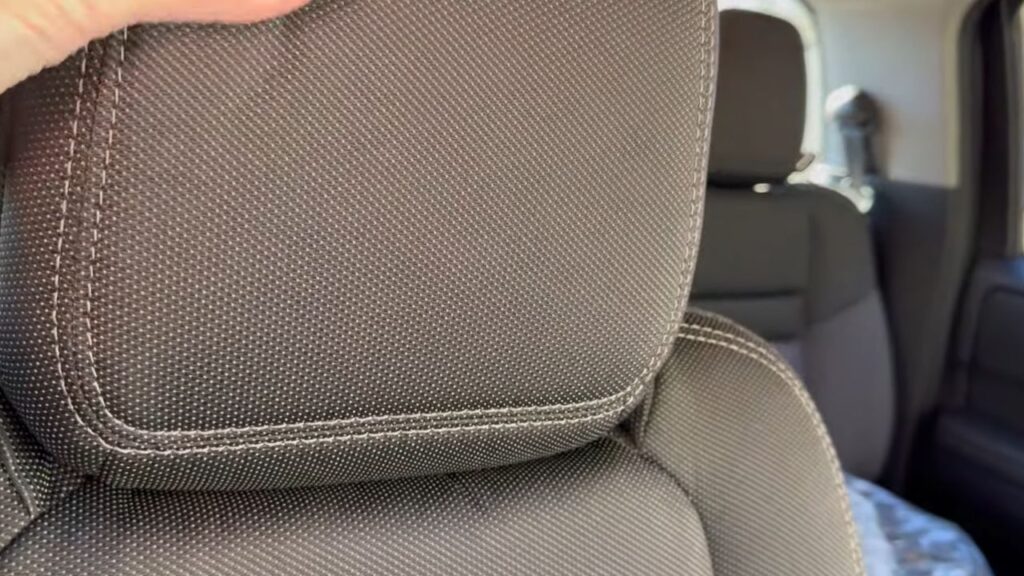
Moving to the front, both trucks offer soft-touch materials in key areas. The Frontier’s center console is deeper than the Tacoma’s, allowing for more storage. The Tacoma, however, features more bottle holders and a storage shelf with a USB-C port.
The Frontier comes with a manual passenger seat and medium bolstering, while the Tacoma’s front seats offer slightly better cushioning. The Tacoma lacks a standard power driver’s seat in the SR5 trim, whereas the Frontier includes a two-way power lumbar support adjustment as standard in the SV trim.
Infotainment and Controls
The Frontier has an upgraded 12.3-inch touchscreen with wireless Apple CarPlay and Android Auto. The interface is easy to navigate, and the system is responsive. The Tacoma’s infotainment system is also intuitive, featuring similar wireless connectivity options. The Tacoma’s HVAC controls and air vents are well-designed, providing strong airflow.
Both trucks offer a variety of driver assistance features, accessible via their respective digital displays. However, the Tacoma’s user interface appears to have fewer customization options compared to the Frontier.